Stabilized Carbon Radical-Mediated Assembly of Arylthianthrenium Salts, Alkenes and Amino Acid/Peptide Derivatives
- PMID: 39573977
- PMCID: PMC11727398
- DOI: 10.1002/advs.202411579
Stabilized Carbon Radical-Mediated Assembly of Arylthianthrenium Salts, Alkenes and Amino Acid/Peptide Derivatives
Abstract
Efficiently assembling amino acids and peptides with bioactive molecules facilitates the modular and streamlined synthesis of a diverse library of peptide-related compounds. Particularly notable is their application in pharmaceutical development, leveraging site-selective late-stage functionalization. Here, a visible light-induced three-component reaction involving arylthianthrenium salts, amino acid/peptide derivatives, and alkenes are introduced. This approach utilizes captodatively-stabilized carbon radicals to enable radical-radical C─C coupling, effectively constructing complex bioactive molecules. This method offers a promising alternative route for modular synthesis of peptide-derived bio-relevant compounds.
Keywords: amino acid; captodative effect; late‐stage functionalization; radical coupling; thianthrenium salt.
© 2024 The Author(s). Advanced Science published by Wiley‐VCH GmbH.
Conflict of interest statement
The authors declare no conflict of interest.
Figures

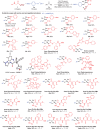
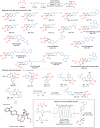
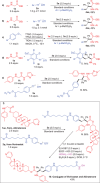
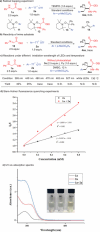
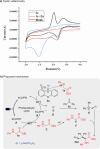
Similar articles
-
Stabilized Carbon-Centered Radical-Mediated Carbosulfenylation of Styrenes: Modular Synthesis of Sulfur-Containing Glycine and Peptide Derivatives.Adv Sci (Weinh). 2024 Aug;11(29):e2402428. doi: 10.1002/advs.202402428. Epub 2024 Jun 9. Adv Sci (Weinh). 2024. PMID: 38852190 Free PMC article.
-
Fragment Coupling with Tertiary Radicals Generated by Visible-Light Photocatalysis.Acc Chem Res. 2016 Aug 16;49(8):1578-86. doi: 10.1021/acs.accounts.6b00284. Epub 2016 Aug 4. Acc Chem Res. 2016. PMID: 27491019
-
N-Functionalized Pyridinium Salts: A New Chapter for Site-Selective Pyridine C-H Functionalization via Radical-Based Processes under Visible Light Irradiation.Acc Chem Res. 2022 Oct 18;55(20):3043-3056. doi: 10.1021/acs.accounts.2c00530. Epub 2022 Sep 27. Acc Chem Res. 2022. PMID: 36166489 Review.
-
Late-Stage N-Arylation of Tryptophan-Containing Peptides and Drug Molecules via Arylthianthrenium Salts.Org Lett. 2025 May 30;27(21):5502-5508. doi: 10.1021/acs.orglett.5c01511. Epub 2025 May 15. Org Lett. 2025. PMID: 40372404
-
Synthesis of selenium compounds by free radical addition based on visible-light-activated se-se bond cleavage.Mini Rev Med Chem. 2013 May 1;13(6):814-23. doi: 10.2174/1389557511313060004. Mini Rev Med Chem. 2013. PMID: 23544462 Review.
References
-
- a) Cooper B. M., Legre J., O’ Donovan D. H., Ölwegård Halvarssonc M., Spring D. R., Chem. Soc. Rev. 2021, 50, 1480; - PubMed
- b) Fu C., Yu L., Miao Y., Liu X., Yu Z., Wei M., Acta. Pharm. Sin. B 2023, 13, 498; - PMC - PubMed
- c) Wang M.‐D., Hou D.‐Y., Lv G.‐T., Li R.‐X., Hu X.‐J., Wang Z.‐J., Zhang N.‐Y., Yi L., Xu W.‐H., Wang H., Biomaterials 2021, 278, 121139. - PubMed
MeSH terms
Substances
Grants and funding
LinkOut - more resources
Full Text Sources
